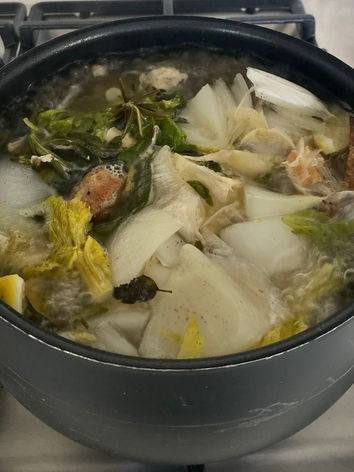











holistic health

Exercise – Move for Your Mood
The Exercise High-Sleep Yoga-Breath Work
Regular exercise helps protect against anxiety and depression.
Moving your body alters your mind. It can reduce hostility, depression, anger & anxiety.
It buoys happiness, self-esteem, energy & life satisfaction.
It can have the same effects of psychotherapy and medication, as well as an immediate effect.
Anxiety/Depression has increased 25% in past 2 years according to World Health Organization (WHO).
A/D has 2 core features: depressed mood & antiedonia (a loss of pleasure in activities you previously enjoyed).
Exercise may even protect you from developing a mood disorder.
Research shows happiness increases with just one day of physical activity per week.
When we move, our body releases a variety of mood-elevating, pain-suppressing chemicals. These chemicals are some of the same ones targeted by antidepressant/anxiety medications, such as Serotonin & GABA (gamma amino butyric acid).
Exercise triggers the release of dopamine, which increases motivation, and endocannabinoids, the cabbabis-like substances created in our bodies.
The Science of Fitness, Special SHAPE Edition
Wellness Lab, Move for Your Mood by Ginny Graves (p34-38)
Get all the feel good benefits by:
Don't worry about getting ripped.
To feel better, throw out the no pain no gain mantra, and do what feels good to you.
Work out with a trainer. Set a goal. Feels more rewarding when someone else sets a goal for you, than the ones you make for yourself.
Exercise releases oxytocin, the love and bonding hormone. So exercising with others offers a sense of connection that's enhanced by movement.
Prioritize activity you enjoy enough to do regularly.
Replay post workout highs, when motivation slips.
Remembering how you felt emotionally the last time you exercised is by far the best motivation to do it again.
The Science of Fitness, Special SHAPE Edition
Wellness Lab, Move for Your Mood by Ginny Graves (p34-38)

BRING IT HOME
I
VITALITY COMPASS
Tool that asks 33 questions, based on answers calculates:
-
Your potential life expectancy at your current age.
-
Your healthy life expectancy – the number of good years you can expect to live.
-
The number of extra years you’re likely to gain if you optimize your lifestyle.
-
A customized list of suggestions to help you with that plan.

II
THE POWER NINE
What to do to optimize your lifestyle, how to think, how to eat, and how to build social relationships that support your good habits, to live a longer, healthier, life.
i. Move Naturally -- Be active without having to think about it.
-
Inconvenience yourself
-
Have fun- Keep Moving
-
Walk
-
Make a date
-
Plant a garden
-
Enroll in a yoga class
ii. Hara Hachi Bu
-
Stop eating when your stomach is 80% full
-
Take in 2,000 calories a day
-
Serve and store
-
Make food look bigger
-
Use smaller vessels
-
Make snacking a hassle
-
Buy smaller packages
-
Give yourself a daily reminder
-
Eat more slowly
-
Focus on food
-
Have a seat
-
Eat early
iii. Plant Slant-- avoid meat and processed foods
-
Eat 4-6 vegetable servings a day
-
Limit intake to meat
-
Showcase fruits and vegetables
-
Lead with beans
-
Eat nuts every day
-
Stock up
iv. Grapes of Life -- drink red wine (in moderation)
-
Buy a case of high quality red wine
-
Treat yourself to a happy hour
-
Take it easy
v. Purpose Now -- Take time to see the big picture. Plan de Vida
-
Craft a personal mission statement
-
Find a partner
-
Learn something new
vi. Downshift -- Take time to relieve stress
-
Reduce the noise
-
Be early
-
Take time to meditate
vii. Belong -- Participate in spiritual community
-
Be more involved
-
Explore a new tradition
-
Just go
viii. Loved Ones First -- Make family a priority
-
Get closer
-
Establish rituals
-
Create a family shrine
-
Put family first
ix. Right Tribe -- Be surrounded by those who share Blue Zone Values
-
Identify your inner circle
-
Be likable
-
Create time together


MEDITATION
BREATHING
Yoga Journal, Your Guide to Healthy Living (3/18/22)
Your Brain on Meditation, by Kelly McGonigal
Science has proven that meditating actually restructures your brain and can train it to concentrate, feel greater compassion, cope with stress, and more.
Meditation, even in small doses, can profoundly influence your experience of the world by removing the physical structure of your brain. Researchers have found meditators have more gray matter, which is associated with more efficient or powerful information processing, in regions of the brain important for attention, emotion regulation, and mental flexibility. This increased gray matter should make them better at controlling their attention, managing emotions, and making mindful choices. Like anything else that requires practice, meditation is a training program for the brain. Regular use may strengthen the connections between neurons and can also make new connections, according to Eileen Luders, a researcher in the Department of Neurology at the University of California LA School of Medicine. “These tiny changes, in thousands of connections, can lead to visible changes in the structure of the brain.”
Meditation can help improve the ability to concentrate in two ways. First, it can help a person focus on something specific, while ignoring distractions. Second, it can make one more capable of noticing what’s happening around you, allowing for a fuller perspective on the present moment. Concentration meditation, in which the meditator focuses on one thing, activates regions of the brain that are critical for controlling attention. Our inability to notice things in our environment is what researchers label as “attention blink”. When we get so caught up in our thoughts and miss what someone else is saying, or not realize the car infront of us has stopped, are just some examples of attention blink. Reducing it, would mean a more accurate and complete perception of reality, noticing more and missing less. Vipassana meditation is said to do just that. Increasing focus, awareness and insight, or “seeing things as they are”.
Meditation can reduce stress, remove disturbances of the mind, and even help people with anxiety disorders. Mindfulness meditation’s mantra is to become aware of the present moment-by paying attention to sounds, your breath, sensations in your body, or thoughts or feelings-and to observe without judgment and without trying to change, what you notice. For those who suffer from anxiety disorders, mindfulness meditation offers freedom for them in part by changing the way the brain responds to negative thoughts, says Philippe Goldin, director of the Clinically Applied Affective Neuroscience project in the Department of Psychology at Stanford University. Goldin’s findings go on to suggest this type of mediation teaches people how to handle distressing thoughts and emotions without being overpowered by them. “The goal of meditation is not to get rid of thoughts or emotions. It’s to become more aware and learn how to move through them without getting stuck.”
Maitryadisu Balani Meditation can cultivate friendliness and create inner strength. Feeling connected to others is as learnable as other skill. Some experienced meditators had a genuine empathic response and felt greater compassion, making the brain more naturally open to forging a connection with others. And according to Professor Barbara Frederickson at the University of North Carolina, lovingkindness mediation can increase one’s daily experience of joy, gratitude, and hope. Other benefits are gaining a greater sense of self-acceptance, social support, purpose in life, and life satisfaction while experiencing fewer symptoms of illness and depression.
Minimal investment in meditation can pay off for your well-being and mental clarity, committing to the practice is the best way to experience its full benefits.
The Science of Breathing, by Jessica Levine
Scientific research is showing that mindful breathing – paying attention to your breath and learning how to manipulate it – can lower everyday stress levels and improve a variety of health factors ranging from mood to metabolism. “Pranayama is at once a physical-health practice, mental-health practice, and meditation. It is not just breath training; it’s mind training that uses the breath as a vehicle. Pranayama makes your entire life better.” - Roger Cole, PhD, a yoga teacher and physiology researcher in Del Mar, California.
There’s a direct relationship between breath rate, mood state, and autonomic nervous system rate, according to Sat Bir Singh Khalsa, PhD, assistant professor of medicine at Harvard medical School. “Actively changing the breath rate can actually change autonomic function and mood state”.
3 Reasons to Breathe Right
-
Happiness + Emotional Stability
-
Better Exercise Stamina
-
Longer Life
Eat Your Way Happy, by Sunny Sea-Gold
Nutritional psychiatry has revealed that what you eat maters greatly to your mental health.
-
Get back to basics
-
Focus on more whole, unprocessed foods. Eat lots of colorful veggies and fruits, lean protein, and whole grains, and very little processed foods.
-
Eat more fermented stuff like kefir, kim chai, sauerkraut, miso, and kombucha contain probiotic bacteria that researchers suggests make your gut naturally better. UCLA researchers found eating a fermented yogurt with probiotics twice daily for a month led to increased activity in areas of the brain that proces emotion and sensation.
-
Avoid junk food.
-
Eat more seafood. Omega-3 fatty acids, like salmon, tuna, halibut, and shrimp, seem to be helpful to people with severe depression.
-
Focus on foods full of vitamins B and D, like spinach, black-eyed peas, and asparagus are packed with folate; seafood, beef, and dairy have lots of B12; and D can be found in salmon, tuna, liver, milk and eggs – can help those battling depression of those low on vitamins B9, which are important in brain and mental health.
-
The Science of Self-Care (and yoga), by Brittany Risher
Take time to slow down and care for yourself – triggers a cascade of positive effects in your mind and body. The ultimate self-care tools? Asana, pranayama, and meditation, are some of the most effective feel-better techniques out there.
-
Boost Immunity
-
Reduce Chronic Inflammation
-
Gain More Self-Control
-
Improve Social and Speaking Skills
-
Better Manage Stress
-
Enhance Working Memory
-
Lower Blood Pressure
-
Improve motor Function and Balance
-
Boost Mood and Confidence
-
Change Gene Activity
-
Increase Relaxation
-
Build Bones (even as you age)
-
Better Overall Brain Health
-
Improve Body Image
-
Support Fertility
-
Slow Aging
-
Increase Pain Tolerance
-
Strengthen Muscles

LESS STRESS
Yoga Journal, Your Guide to Less Stress (12/9/22)
Rise & Shine!
Feeling groggy, do yoga.
Energy Rising
Kundalini meditation taps into the flow of energy within you. The word “kundalini” refers to the energy that resides at the base of the spine and once awakened, rises up the spine leading to a spiritual awakening. This type of practice will familiarize you with the chakras and usher you into stillness.
Add Intensity
When added to yoga, HIIT (High Intensity Interval Training) – juxtaposing intense bursts of movement with short periods of rest – the benefits can be profound. Research suggests HIIT may increase cardiovascular fitness and reverse the effects of aging, according to a 2017 Mayo Clinic study. HIIT can also help with weight loss or maintenance, should that be your goal. The American College of Sports Medicene recommends 20 -60 minutes, with each high-intensity element taking five seconds to eight minutes, per workout.
Force of Nature, by Sally Kempton
“The secret to harnessing yoga’s true power is learning to tap into your shakti energy,,,the energy that’ the true secret sauce of yoga.”
Shakti means power, energy or force. Mythological, shakti is described as feminine, often referred to as the goddess of Devi. She is considered the source of both matter and physical energy, as well as of just about everything else. It is the ability to find, feel, and harvest this subtle inner energy, also referred to as intuitive knowledge, to expand your awareness and strengthen your will. Shakti is the innate creativity at the heart of all things. It's the life-force energy that makes the river flow just as it powers your breath, makes your heart beat, forms your muscles, and fires your neurons. This energy is within everything, and governs our spiritual evolution. Sometimes referred to as antar shakti, yogashakti, or kundalini – it s the secret force that evolves your consciousness and opens the doorways to your soul. It is as present in men, as it is in women. Shakti can manifest in different ways though breathwork, mantras, meditation, chakra practice, and with others whose shakti is already awake. It may also activate a natural part of the inner growth process. Spiritually, shakti’s force works to transform and evolve your experience of self-growth, life goals, priorities, and how you relate to others and the world. It increases the ability to tune in to subtle presence, resonates at higher energy frequencies, brings truth and mystical emotions to the surface, helps dissolve traumas, and quickens the capacity for insight and awareness. Inner work is just like physical work. It requires effort and willingness in the right nutrients, meditation, self-reflection, and a supportive cultural environment. Once this spiritual awakening of shakti is revealed, your inner and creative self will grow exponentially. Use this healing practice when dealing with a difficult emotion, working on a creative project, during meditation, or asana. The benefits and effects are endless.
Dig Deep
“Sometimes subtle transformations are the most powerful,” says yoga teacher Jennifer Pastiloff, author of On Being Human: A Memoir of Waking Up, Living Real, and Listening Hard. Founder of Living Sanskrit and the Center for Natural Mind, artist, and meditation teacher, Shivani Hawkins, describes inner transformation as an organ process says, “A lot of what passes as meditation training is actually spiritual bypassing. People are taught to ascend to a higher realm. They’re taught their feelings and emotions are inferior to bigger states of consciousness. But sometimes something is awry and we need to do hard work to make it right instead of jumping to a state where all is one and everything is fine.” In other words, if the only way we can relate to our own reality is by escaping it, then we’ve actually diminished our capacity for presence and awareness, she explains. Hawkins encourages her students to approach meditation with curiosity instead of trying to control the process.
“All of the things we run away from hold valuable bits of information. We think anger is bad and grief is too painful. But anything that is going on in your system is potent and revealing something to you. This includes awful sensations, anxiety, grief, and anger. You may experience a primal rage that is telling you that a boundary was crossed or a really deep need or want that is not being met. This is amazing information that can guide and inform the changes or new actions you need to take. If you suppress it, you'll block transformation. One of the most sacred, powerful turning points in life is when you can meet that place of rage or grief with love and a deep desire to understand.” – Shivani Hawkins
Go easy on yourself, take baby steps. Long-standing patterns and deep wounds can’t be changed or healed overnight. Small incremental changes are much more important, and ultimately longer lasting, than big leaps. Find a community of like-minded persons, a spiritual guide or meditation teacher to get started on your journey towards life-altering transformation. Wellness is personal and individualistic. Get tuned in to your inner self. Go inward, listen to what your mind and body are telling you. It will allow for wiser choices, self-growth, thus creating a more purposeful, happier, and fulfilling life. Your ability to deal with life’s daily challenges and struggles will become easier, and your mind and body will thank you for it. Don’t be afraid of the silence-it's talking to you.
Patanjali’s Yoga Sutra
Neuroscience and psychology have confirmed what the wisdom of Patanjali Yoga Sutra has suggested. Develped more than 2,000 years old, we have learned what the effects of this type of practice has had on those suffering from trauma, clearing emotional patterns, and finding vision for the future. The brain is physically and functionally affected as a result of traumas or profound samaskaras, and these changes can affect the individuals visions of themselves and their lives. Second, the brain also has the capacity to heal, to retire or rewrite the impression, so that it can be experienced differently. Instead of being drawn into the habitual pain of suffering, we can learn to experience a pause, see a lesson, or even gain insight for which we become grateful. Practicing Patanjali’s yoga, it is believed, can clear our samskaras. – Tatiana Forero Puerta, author of Yoga for the Wounded Heart.
Shivani Hawkins – Meditation Teacher, shares tips for how to approach the practice in a way that invites self-awareness and authentic transformation.
-
Be a Gardener – Inner transformation can seem as slow as a tree branch growing. Nurture ourselves, be patient, and let things unfold in their own way.
-
Track the Discomfort – When caught up in a loop of critical, anxious thoughts, there is often times deeply held self-shaming hiding underneath what we tell ourselves. Each thought and belief are localized in a particular place or patterns within our body or breath. When experiencing these types of feelings or thoughts, pay attention to to your breath and sensations in your body. Is your stomach in knots? Throat aching? Breathing hard? Gently identify where the discomfort is coming from in your body. Our minds may be all over the place, but our body is simpler. Giving attention to the physical expression of your thoughts, you can more quickly and accurately identify what core beliefs are driving these waves of thoughts.
-
Trust the Process – Sitting with your own pain or discomfort may allow you to discover the deeper truth behind what you are experiencing. In this silence, the mental chatter stops and it will become easier to hear the voice of deeper wisdom, your own. Maybe it’s to tell you you did all you could do, or that you are good enough. When our own compassion rises to meet your pain, it is common to feel a physical or emotional release. Some laugh, shake, cry. Accessing your own love, feeling the love you have for yourself, will bring about a stillness and joy without having to escape any aspect of yourself. No matter how radical, scary or unwelcome it was at first, the sensation of self-love will help remind you, you are in fact enough.
-
Be generous in your love for yourself – Sometimes, the way most of us talk to ourselves can be really critical, unkind, and inpatient, even shaming ourselves. Beginning each meditation with positive thoughts – like “I’m here and I always will be. Nothing you say or do is going to make me leave. I will Whatever thought, sensation, or belief arises, I will be here with you.” Show up for yourself like a loyal, loving friend. And in this tender space you may hear new things, witness emotions that have never surfaced before, experience tremendous gratitude, or may just be bored (which is ok, too). Boredom is known to lead to insight or creative breakthroughs later on! What’s important is to not abandon yourself during your practice.
Get a Good Night’s Rest
For those who can’t sleep, a few pieces of advice from Woodson jerrell, MD, founding executive director of the Center for Health and Healing in New York says:
“If insomnia persists, be sure to look into physical problems that might impair sleep quality. Hormone inbalances, restless leg syndrome, and sleep apnea are common culprits.”
Below are a few smart strategies to assist in a getting a good night’s sleep, and staying asleep:
-
DEVELOP A ROUTINE
-
GO EASY ON CAFFEINE AND ALCOHOL
-
KEEP A TO-DO LIST
-
POWER DOWN AT LEAST AN HOUR BEFORE BED
-
EXERCISE EARLY
-
EAT LIGHT
-
IF YOU WAKE UP, DON’T GET WORKED UP
Power Up
Fueling our bodies with the right nutrition, sleep, and exercise, we can achieve soaring energy that lasts all day – Karolyn Gazella
Fatigue is one of the most common reasons people seek the advice of a doctor, and also the cause of about 20 percent of reported car crashes in the United States, as well as workplace accidents and lack of productivity.
Fatigue can lead to irritability, anxiety, depression. Experts agree the first step is getting to the root cause.
“Fatigue can be a symptom of many health conditions including anemia, hypothyroidism, cardiovascular issues, diabetes, fibromyalgia, and cancer. In addition, other factors can cause fatigue such as stress and the use of certain prescription medications like antidepressants,” explains Lise Alschuler, best-selling author and naturopathic oncologist. The key, she stresses, is to rule out any serious illnesses before you embark on your energy-enhancing plan. Once this is ruled out by your medical team and holistic physician (she highly recommends), the first place to look for more energy is at mealtime and at night. “Poor nutrition and poor sleep-both quality and quantity- are the leading causes of lack of energy,” says Alschuler.
Food is energy, and we are what we eat. Your internal power plant is what’s sitting on your plate. Choosing quality, non-processed foods, with a low blood sugar intake, is the best way to achieve and continually maintain high energy.
“A foundational tenet of any high-energy diet is to swap the quick fixes such as sugar and carbs for enduring energy enhancers such as quality protein, healthy fats, fiber and whole, unprocessed foods.” Alschuler advises.
A high protein diet with frequent small meals can improve energy. Drinking lots of water is another way to stay energized. A quick way to check if you’re hydrated is by the color of your urine. Light colored urine is a great indicator that you are getting enough water.
“A healthy breakfast includes protein and fiber”, is a great way to start your day says Alschuler. “Research indicates that people who begin their day with a nutrient-packed, robust breakfast are even more likely to maintain high energy levels thought the day, and avoid blood sugar crashes.”
Deficiencies of B12 or iron can also cause fatigue. Getting the right nutrition or supplement can help correct these deficiencies and important to maintain energy.
TOP 5 HIGH-POWERED ENERGY FOODS
-
Healthy fats.
-
Organic fruit.
-
Colorful organic vegetables.
-
Coffee and tea.
-
A better breakfast.
TOP 5 ENERGY-ZAPPING FOODS
-
Simple carbohydrates and sugars.
-
Bagels, cereal, and muffins.
-
Poor beverage choices.
-
Processed and fast foods.
-
The unhealthy fats.
TOP 5 ENERGY-ENHANCING SUPPLEMENTS
-
B Vitamins.
-
Herbal adaptogens.
-
Omega-3s.
-
Probiotics.
-
Multivitamin/mineral supplement.
YOGA & MINDFULNESS in LEADERSHIP
Practicing yoga and mindfulness make us more aware, increase our sense of connection, inspire more kindness towards ourselves and others, keep us grounded, and create more fulfilling and purposeful lives. Whole-hearted living can be achieved through many tools, practices, and beliefs. Committing to these practices spills in to all areas of our lives – from family to friends, to the workplace. Once you find the peace and tranquility within, our perspectives broaden, patience with self and others increases, and our relationships shift to more positive, compassionate interactions. From yoga instructors to CEOs, leader of the household or college intern, we all struggle with finding that balance between work and play, family and personal time. But we are all leaders and CEOs of our bodies. Going inward, learning more about yourself helps you become more authentic, more passionate in what you do, fosters healthy emotions, discover opportunities, and begin to experience life unconditionally. It’s been said compassion is a byproduct of meditation. “It is essentially opening unconditionally to the world on its terms, not ours, and this ability is a powerful leadership tool….Leadership is not just about meeting our objectives, it’s also about inspiring a sane and dignified world.” – Michael Carroll, Former Wall Street Executive, mindful-leadership consultant, and author of Awake at Work
RAISE YOUR VIBRATION TO FIND YOUR HIGHER SELF
Scientific research has shown that our thoughts and intentions have a direct effect on not just our own physiology and psychology but the health, behavior, and appearance of other living and non-living things as well. The ability to access higher purpose, potential, and joy by focusing on our own intentions and beliefs, raises our frequencies to a higher resonance. This in turn is often felt by others, and can be very healing. Doors may open out of nowhere, and its as if life seems to flow downstream. This law of attraction is found in our everyday lives, from manifesting a safe drive to the grocery store, to getting that job. Not all of our wishes come true as we know. That closed door, or “desert period” of struggle or solitude, is often the place most people fight and don’t want to be in. However it is often in this time of darkness light is found. Sacred solitude is where all the magic and transformation happens and where discomfort, loneliness, and despair become brighter tomorrows. Trusting the process, believing in the system, listening to your heart, following your gut, is only your soul taking you somewhere new. – Lalah Delia
FIND YOUR HAPPINESS
“Research shows the key to happiness is staying present and embracing whatever gifts each decade brings.” – Aimee Heckel
How a person defines happiness affects their perception of it. From ancient traditions to modern, scholarly ones, there are quite a few definitions out there and all go back to being present in our lives.
Delight, being content with what you have, who you are, and where you are in this moment. Happiness is not wishing you were better, richer, smarter. It is the comfort and sweetness we feel, even in the midst of confusion or turbulent times. It is finding happiness in others joy and happiness, and not wishing it was yours. When we are happy -in however that looks or feels- we radiate with joyous energy, embracing life and others. And best put by the Dalia Lama, “happiness is a sense of deep satisfaction.”
Being present in the moment, right here, right now. Going inward, listening and growing, letting go, and loving unconditionally breeds happiness and inner peace, bursts of joy, and more fulfilling lives. Happiness comes from within, and living a whole-hearted life is a sure way to feel more consistently satisfied throughout our lives, achieving a true sense of happiness. Happiness is rolling down a grass hill, watching the sun set, or a good hug. It is the essence of embracing and appreciating all that is, and not wanting more.
FIND YOUR HAPPINESS
“Research shows the key to happiness is staying present and embracing whatever gifts each decade brings.” – Aimee Heckel
How a person defines happiness affects their perception of it. From ancient traditions to modern, scholarly ones, there are quite a few definitions out there and all go back to being present in our lives.
Delight, being content with what you have, who you are, and where you are in this moment. Happiness is not wishing you were better, richer, smarter. It is the comfort and sweetness we feel, even in the midst of confusion or turbulent times. It is finding happiness in others joy and happiness, and not wishing it was yours. When we are happy -in however that looks or feels- we radiate with joyous energy, embracing life and others. And best put by the Dalia Lama, “happiness is a sense of deep satisfaction.”
Being present in the moment, right here, right now. Going inward, listening and growing, letting go, and loving unconditionally breeds happiness and inner peace, bursts of joy, and more fulfilling lives. Happiness comes from within, and living a whole-hearted life is a sure way to feel more consistently satisfied throughout our lives, achieving a true sense of happiness. Happiness is rolling down a grass hill, watching the sun set, or a good hug. It is the essence of embracing and appreciating all that is, and not wanting more.
The Science of Fitness, Special SHAPE edition
EXERCISE- MOVE FOR YOUR MOOD
Wellness Lab, Move for Your Mood, by Ginny Graves (p34-38)
The Exercise High-Sleep Yoga-Breath Work
Regular exercise helps protect against anxiety and depression.
Moving your body alters your mind. It can reduce hostility, depression, anger & anxiety.
It buoys happiness, self-esteem, energy & life satisfaction.
It can have the same effects of psychotherapy and medication, as well as an immediate effect.
Anxiety/Depression has increased 25% in past 2 years according to World Health Organization (WHO).
A/D has 2 core features: depressed mood & antiedonia (a loss of pleasure in activities you previously enjoyed).
Exercise may even protect you from developing a mood disorder.
Research shows happiness increases with just one day of physical activity per week.
When we move, our body releases a variety of mood-elevating, pain-suppressing chemicals. These chemicals are some of the same ones targeted by antidepressant/anxiety medications, such as Serotonin & GABA (gamma amino butyric acid).
Exercise triggers the release of dopamine, which increases motivation, and endocannabinoids, the cabbabis-like substances created in our bodies.
Get all the feel good benefits by:
-
Don't worry about getting ripped.
-
To feel better, throw out the no pain no gain mantra, and do what feels good to you.
Work out with a trainer. Set a goal. Feels more rewarding when someone else sets a goal for you, than the ones you make for yourself.
Exercise releases oxytocin, the love and bonding hormone. So exercising with others offers a sense of connection that's enhanced by movement.
Prioritize activity you enjoy enough to do regularly.
Replay post workout highs, when motivation slips.
Remembering how you felt emotionally the last time you exercised is by far the best motivation to do it again.

























